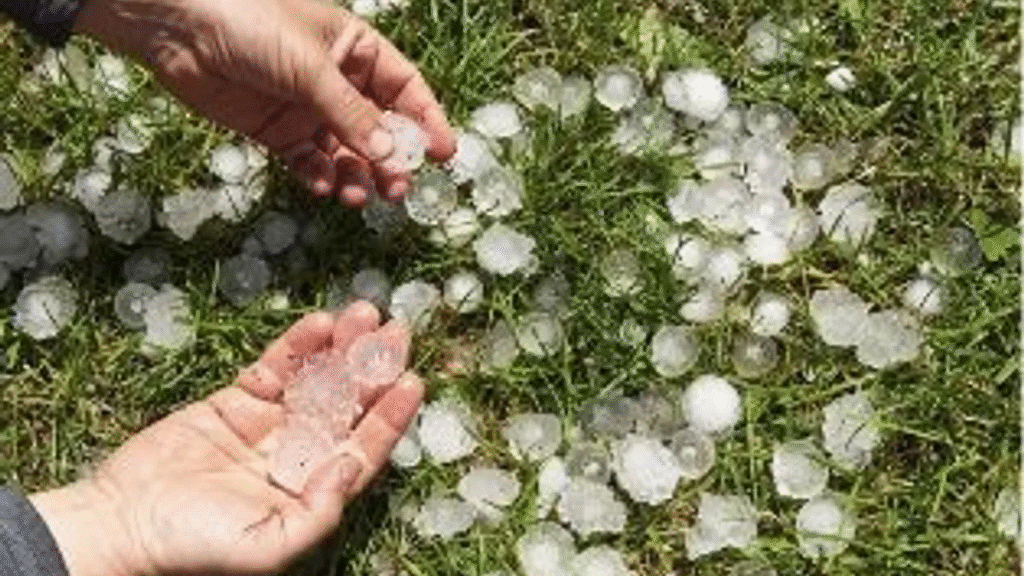Now Reading: This Is What Happens Before Rain Falls From the Sky 2025
-
01
This Is What Happens Before Rain Falls From the Sky 2025
This Is What Happens Before Rain Falls From the Sky 2025

Table of Contents
Have you ever wondered how rain, snow, or hail actually forms? These natural wonders are part of a bigger process called precipitation, which plays a key role in the Earth’s water cycle. Precipitation is not just about water falling from the sky — it is a vital mechanism that keeps our planet alive and thriving.
In this article, we will explore what precipitation is, how it happens, and why it is so important for life on Earth. We will break down the science in simple terms, so you can better understand this fascinating part of nature.
What Is Precipitation?

Precipitation is any form of water that falls from clouds to the ground. This includes rain, snow, sleet, hail, and even drizzle. Without precipitation, our rivers, lakes, and underground water supplies would dry up, affecting all living things.
It may seem simple — water falls from the sky — but the process is actually a complex and beautiful dance of nature that starts with the sun.
The Water Cycle: The Bigger Picture
Before we dive deeper into precipitation, let’s look at the bigger picture: the water cycle. The water cycle describes how water moves through the environment. It has four main steps:
- Evaporation – The sun heats up water from oceans, lakes, and rivers. This water turns into vapor and rises into the air.
- Condensation – As the water vapor rises, it cools down and changes back into tiny droplets, forming clouds.
- Precipitation – When the clouds become heavy with water droplets, the water falls back to Earth as rain, snow, or other forms of precipitation.
- Collection – The water collects in rivers, lakes, or seeps into the ground, and the cycle starts all over again.
Precipitation is the third stage of this cycle — and arguably the most dramatic and visible part.
How Does Precipitation Happen?
Precipitation happens when tiny water droplets or ice crystals in clouds get too heavy to stay up in the air. Let’s break this down further:
- Cloud Formation: Clouds are made of tiny water droplets or ice crystals. These form around small particles like dust or pollen in the air.
- Droplet Growth: As more water vapor condenses onto these particles, the droplets grow bigger and heavier.
- Gravity Takes Over: When the droplets become too heavy to float, gravity pulls them down. This is when precipitation happens — in the form of rain, snow, hail, or sleet, depending on the temperature and air conditions.
For example, in warm weather, we usually see rain. If the temperature is below freezing, the water droplets freeze and fall as snow or sleet. In thunderstorms, strong updrafts in the clouds can toss frozen droplets up and down many times, building hailstones that eventually crash down to Earth.
Why Precipitation Is Important
Precipitation is a lifeline for our planet. Here are a few reasons why it matters so much:
It refills freshwater sources – Rain and snow feed rivers, lakes, and underground water, which people, plants, and animals all depend on.
It supports agriculture – Farmers rely on rain to grow crops and raise livestock.
It balances ecosystems – Precipitation helps maintain healthy forests, wetlands, and grasslands.
It influences weather patterns – Areas with more precipitation tend to have different weather than dry regions, affecting everything from wildlife to human settlements.
Without precipitation, droughts would become more common, food production would suffer, and entire ecosystems could collapse.
Precipitation in a Changing Climate
Scientists are closely watching precipitation patterns because climate change is altering them in many places. Some areas are getting more rain than ever, leading to floods, while others are experiencing record droughts.
Warmer air can hold more water vapor, which can make storms more intense. This means that while some places may suffer from heavier rainfall and floods, others might see less rain and more heat waves.
Understanding precipitation is more important than ever, so communities can plan for changes and protect their water supplies.
Fun Facts About Precipitation

- The wettest place on Earth is Mawsynram in India, which gets about 467 inches of rain every year!
- The largest hailstone ever recorded in the United States fell in South Dakota in 2010 and measured nearly 8 inches across.
- Snowflakes are made of ice crystals that stick together, and no two snowflakes are exactly alike.
Conclusion
Precipitation is a crucial part of the water cycle that sustains life on Earth. From gentle drizzle to powerful downpours, this natural process redistributes water all over the planet. By better understanding how precipitation works, we can appreciate the delicate balance of nature and why protecting our climate and water resources is so vital.
So next time you see raindrops on your window or snowflakes falling from the sky, remember that you are witnessing one of nature’s greatest and most important shows.
Read More:- Deyaar’s Latest Announcement Shakes Up the UAE Property Market






















